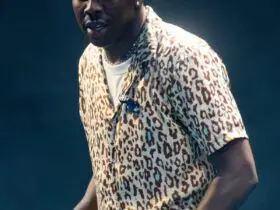The debate over AI-generated album covers: A closer look
The controversy surrounding ‘Songs for a Nervous Planet’
The recent release of the album ‘Songs for a Nervous Planet’ has sparked a heated debate in the music industry. The focal point of this controversy is the album cover, which was produced using artificial intelligence (AI). Critics argue that creating an image with a computer lacks the emotional depth and soul that human artists bring to their work. Moreover, there are ethical concerns about using other artists’ works without permission to train AI models.
The role of AI in modern music production
Artificial intelligence has been making significant inroads into various aspects of music production, from composing melodies to generating album artwork. The use of AI in creating the cover for ‘Songs for a Nervous Planet’ is a prime example of this trend. While some see it as a groundbreaking innovation, others view it as a threat to the authenticity and integrity of artistic expression.
The technical side of AI-generated art
AI-generated art typically involves training algorithms on vast datasets of existing artworks. These algorithms learn patterns and styles, enabling them to create new images that mimic human-created art. However, this process raises questions about originality and intellectual property. Is it fair to use the works of countless artists to train an AI without their consent?
The response from Tears for Fears
In response to the backlash, the band Tears for Fears has defended their decision to use AI for their album cover. They argue that AI is merely a tool, much like a paintbrush or a camera, and that it can be used to explore new creative possibilities. The band also emphasized that the final artwork was a collaborative effort, with human input guiding the AI’s output.
Artistic innovation or ethical dilemma?
The use of AI in art is a double-edged sword. On one hand, it opens up new avenues for creativity and allows artists to experiment with styles and techniques that would be difficult to achieve manually. On the other hand, it raises ethical questions about the ownership and authenticity of the resulting works. Is an AI-generated image truly art if it lacks the human touch?
The broader implications for the music industry
The controversy surrounding ‘Songs for a Nervous Planet’ is just one example of the broader impact of AI on the music industry. As AI technology continues to evolve, it will likely play an increasingly prominent role in various aspects of music production, from composing and arranging to marketing and distribution.
The future of AI in music
Looking ahead, the integration of AI in music production is expected to grow. Artists and producers will need to navigate the ethical and creative challenges that come with this technology. While AI offers exciting possibilities, it is crucial to ensure that its use respects the rights and contributions of human artists.
Engage with the conversation
Did you enjoy this article? Share it on your social channels and let us know your thoughts! Don’t miss out on the latest updates! Follow us on social media to stay tuned to all the newest releases and industry news.
For more information on the album ‘Songs for a Nervous Planet,’ visit Music Still.
By exploring the technical, ethical, and creative dimensions of AI-generated art, this article aims to provide a comprehensive understanding of the ongoing debate. As the music industry continues to evolve, it is essential to consider the implications of new technologies and their impact on artistic expression.
















